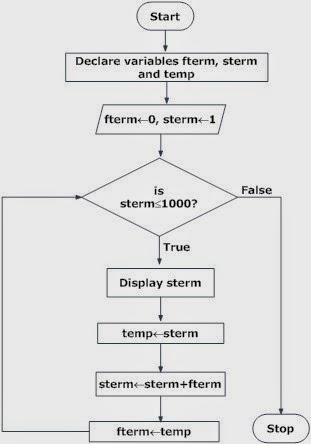The Induction Ball and the Search for Mr. and Miss SSC 2014 at Romblon State University (Sawang Campus happened on June 27, 2014 resulting to our new SSC Queen from the BSIT Department(IT Society)
Sunday, June 29, 2014
Thursday, June 26, 2014
Flowchart in Programming
By Christian Grey Señorin Tolentino7:02 PMAssignments, Fundamentals in Programming, IT112
No comments:

We have an Assignment about the Flowchart in Programming in our major subject Fundamentals of Programming and this is what I searched...
Flowchart is a diagrammatic representation of an algorithm. Flowchart are very helpful in writing program and explaining program to others.
Symbols Used In Flowchart
Different symbols are used for different states in flowchart, For example: Input/Output and decision making has different symbols. The table below describes all the symbols that are used in making flowchart
| Symbol | Purpose | Description |
|---|---|---|
| Flow line | Used to indicate the flow of logic by connecting symbols. | |
| Terminal(Stop/Start) | Used to represent start and end of flowchart. | |
| Input/Output | Used for input and output operation. | |
| Processing | Used for airthmetic operations and data-manipulations. | |
| Desicion | Used to represent the operation in which there are two alternatives, true and false. | |
| On-page Connector | Used to join different flowline | |
| Off-page Connector | Used to connect flowchart portion on different page. | |
| Predefined Process/Function | Used to represent a group of statements performing one processing task. |
Examples of flowcharts in programming
Draw a flowchart to add two numbers entered by user.
Draw a flowchart to find the Fibonacci series till term≤1000.
Draw a flowchart to find all the roots of a quadratic equation ax2+bx+c=0
Draw flowchart to find the largest among three different numbers entered by user.
Though, flowchart are useful in efficient coding, debugging and analysis of a program, drawing flowchart in very complicated in case of complex programs and often ignored.
Source: http://www.programiz.com/article/flowchart-programming
Tuesday, June 24, 2014
Six Elements of an Information System
By Christian Grey Señorin Tolentino5:01 PMAssignments, Fundamentals of Computer, IT 101
No comments:

Our professor gives us an assignment about the Elements of an Information System and this is what I have searched:))).. I'm going to pass it this afternoon.
In
"Fundamentals of Information Systems," Ralph Stair and George
Reynolds define a computer-based information system (CBIS) as a "single
set of hardware, software, databases, telecommunications, people, and procedures
configured to collect, manipulate, store, and process data into
information." Some experts list five basic elements of a CBIS: hardware,
software, data, procedures and people. Others add a sixth element,
communications, to the list.
Hardware
·
Hardware is the
most obvious part of a computer-based information system. Hardware refers to
the computers themselves, along with any and all peripherals, including
servers, routers, monitors, printers and storage devices. A CBIS may use a
single computer or thousands.
Software
·
Without software,
the hardware wouldn't be very useful. Software, the second element of a CBIS,
is what tells the hardware how to function. It gathers, organizes and
manipulates data and carries out instructions. Everything you do using a
computer is done by the software.
·
Data
Data
·
Data, or
information, is the third element of a CBIS. Just as hardware cannot function
without software, software cannot function without data. This is the
information part of an information system, and whether that is statistical
data, sets of instructions, lists of names or even graphics and animations, it
is all key to a CBIS.
Procedures
·
It is commonly
said that "procedures are to people what software is to hardware."
The fourth element of CBIS, procedures are the rules, descriptions and
instructions for how things are done. In computer-based information systems,
procedures are frequently covered in instruction or user manuals that describe
how to use the hardware, software and data.
People
·
People are the most
often overlooked and most important part of a computer-based information
system. It is people who design and operate the software, input the data, build
the hardware and keep it running, write the procedures and it is ultimately
people who determine the success or failure of a CBIS.
Communication
·
Communication is
left out of some lists of CBIS elements, but for a CBIS that involves more than
one piece of hardware to function, communication or connectivity is a
necessity. This is, in part, because parts of it are covered under hardware.
The components that allow one computer to communicate with another are hardware
and are controlled by software. If communication between people is included in
this element, though, it is an important element.















